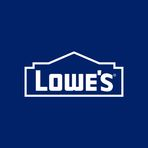Retail Resilience Amid Tariff Turbulence: A Look at TJX and Lowe's
May 22, 2025, 5:34 am
In the ever-shifting landscape of retail, two giants, TJX Companies and Lowe's, have recently navigated the stormy seas of economic uncertainty and tariff pressures. Both companies reported their quarterly earnings, revealing a tale of resilience and strategic maneuvering in the face of challenges. As consumers tighten their belts, discount retailers and home improvement stores are adapting to maintain their footing. This article delves into the financial performances of TJX and Lowe's, exploring how they are responding to tariff-induced pressures and shifting consumer behaviors.
Retail is a battlefield. Companies rise and fall with the tides of consumer sentiment and economic shifts. Recently, TJX Companies, the parent of TJ Maxx, and Lowe's, a leader in home improvement, have shown that they can weather the storm. Their latest earnings reports reveal a mix of optimism and caution, reflecting the current economic climate.
TJX Companies reported a strong quarterly performance, beating sales estimates despite looming tariff uncertainties. The company’s net sales reached $13.11 billion, surpassing expectations. This success is rooted in a strategic focus on off-price goods, which have become increasingly appealing to consumers wary of rising prices. As inflation bites and recession fears loom, shoppers are flocking to discount retailers, seeking value without sacrificing quality.
The winds of change are blowing through the retail sector. Tariffs imposed on imports, particularly from China, have created a ripple effect. While TJX has managed to sidestep some immediate impacts, the company acknowledged that the tariffs will have a lingering effect on its pricing strategy. The forecast for the upcoming quarter suggests a modest growth in comparable sales, projected between 2% and 3%. However, this is tempered by the reality of increased costs due to tariffs.
Lowe's, on the other hand, has also shown resilience. The home improvement retailer reported a smaller-than-expected drop in first-quarter sales, bolstered by steady demand from professional customers. This segment is crucial, as contractors and builders continue to invest in projects despite economic uncertainty. Lowe's is committed to maintaining competitive pricing, a strategy that contrasts with some of its competitors who are opting for price stability.
The competitive landscape is fierce. Lowe's CEO emphasized the importance of not ceding market share to rivals. The company is prepared to adjust prices if necessary, a move that could be influenced by ongoing tariff pressures. While Home Depot, a key competitor, has chosen to keep prices steady, Lowe's is taking a more aggressive stance, ensuring it remains a go-to destination for both DIY enthusiasts and professionals.
Both companies are navigating a complex web of supply chain challenges. Lowe's has diversified its sourcing strategy, with about 60% of its purchases coming from the U.S. This local focus helps mitigate some tariff impacts, although a significant portion still relies on imports from China. The potential for price increases looms large, particularly for items like tools and appliances that are heavily imported.
The consumer landscape is shifting. As economic pressures mount, shoppers are becoming more discerning. They are rethinking their spending habits, opting for value-driven purchases. This trend plays into the hands of off-price retailers like TJX, which thrive on providing quality goods at lower prices. The company’s ability to source products from various channels allows it to remain agile in a fluctuating market.
Lowe's is also adapting to these changes. The company’s recent acquisition of Artisan Design is a strategic move to enhance its focus on professional customers. By investing in technology and store improvements, Lowe's aims to create a more compelling shopping experience. This proactive approach is essential in a market where consumer sentiment can shift rapidly.
As both companies look ahead, the economic landscape remains uncertain. Analysts predict that the impact of tariffs will continue to be felt, influencing pricing strategies and consumer behavior. For TJX, the forecast for fiscal 2026 suggests a cautious optimism, with expected comparable sales growth of 2% to 3%. Lowe's, meanwhile, anticipates flat to slightly positive sales growth, a reflection of its commitment to navigating the challenges ahead.
In conclusion, TJX and Lowe's exemplify resilience in the face of adversity. They are adapting to a changing retail environment marked by economic uncertainty and tariff pressures. As consumers seek value, these companies are positioned to meet their needs while managing the complexities of their supply chains. The retail landscape may be fraught with challenges, but for TJX and Lowe's, the future holds promise. Their ability to pivot and respond to market dynamics will be crucial as they continue to thrive in a competitive arena.
Retail is a battlefield. Companies rise and fall with the tides of consumer sentiment and economic shifts. Recently, TJX Companies, the parent of TJ Maxx, and Lowe's, a leader in home improvement, have shown that they can weather the storm. Their latest earnings reports reveal a mix of optimism and caution, reflecting the current economic climate.
TJX Companies reported a strong quarterly performance, beating sales estimates despite looming tariff uncertainties. The company’s net sales reached $13.11 billion, surpassing expectations. This success is rooted in a strategic focus on off-price goods, which have become increasingly appealing to consumers wary of rising prices. As inflation bites and recession fears loom, shoppers are flocking to discount retailers, seeking value without sacrificing quality.
The winds of change are blowing through the retail sector. Tariffs imposed on imports, particularly from China, have created a ripple effect. While TJX has managed to sidestep some immediate impacts, the company acknowledged that the tariffs will have a lingering effect on its pricing strategy. The forecast for the upcoming quarter suggests a modest growth in comparable sales, projected between 2% and 3%. However, this is tempered by the reality of increased costs due to tariffs.
Lowe's, on the other hand, has also shown resilience. The home improvement retailer reported a smaller-than-expected drop in first-quarter sales, bolstered by steady demand from professional customers. This segment is crucial, as contractors and builders continue to invest in projects despite economic uncertainty. Lowe's is committed to maintaining competitive pricing, a strategy that contrasts with some of its competitors who are opting for price stability.
The competitive landscape is fierce. Lowe's CEO emphasized the importance of not ceding market share to rivals. The company is prepared to adjust prices if necessary, a move that could be influenced by ongoing tariff pressures. While Home Depot, a key competitor, has chosen to keep prices steady, Lowe's is taking a more aggressive stance, ensuring it remains a go-to destination for both DIY enthusiasts and professionals.
Both companies are navigating a complex web of supply chain challenges. Lowe's has diversified its sourcing strategy, with about 60% of its purchases coming from the U.S. This local focus helps mitigate some tariff impacts, although a significant portion still relies on imports from China. The potential for price increases looms large, particularly for items like tools and appliances that are heavily imported.
The consumer landscape is shifting. As economic pressures mount, shoppers are becoming more discerning. They are rethinking their spending habits, opting for value-driven purchases. This trend plays into the hands of off-price retailers like TJX, which thrive on providing quality goods at lower prices. The company’s ability to source products from various channels allows it to remain agile in a fluctuating market.
Lowe's is also adapting to these changes. The company’s recent acquisition of Artisan Design is a strategic move to enhance its focus on professional customers. By investing in technology and store improvements, Lowe's aims to create a more compelling shopping experience. This proactive approach is essential in a market where consumer sentiment can shift rapidly.
As both companies look ahead, the economic landscape remains uncertain. Analysts predict that the impact of tariffs will continue to be felt, influencing pricing strategies and consumer behavior. For TJX, the forecast for fiscal 2026 suggests a cautious optimism, with expected comparable sales growth of 2% to 3%. Lowe's, meanwhile, anticipates flat to slightly positive sales growth, a reflection of its commitment to navigating the challenges ahead.
In conclusion, TJX and Lowe's exemplify resilience in the face of adversity. They are adapting to a changing retail environment marked by economic uncertainty and tariff pressures. As consumers seek value, these companies are positioned to meet their needs while managing the complexities of their supply chains. The retail landscape may be fraught with challenges, but for TJX and Lowe's, the future holds promise. Their ability to pivot and respond to market dynamics will be crucial as they continue to thrive in a competitive arena.

